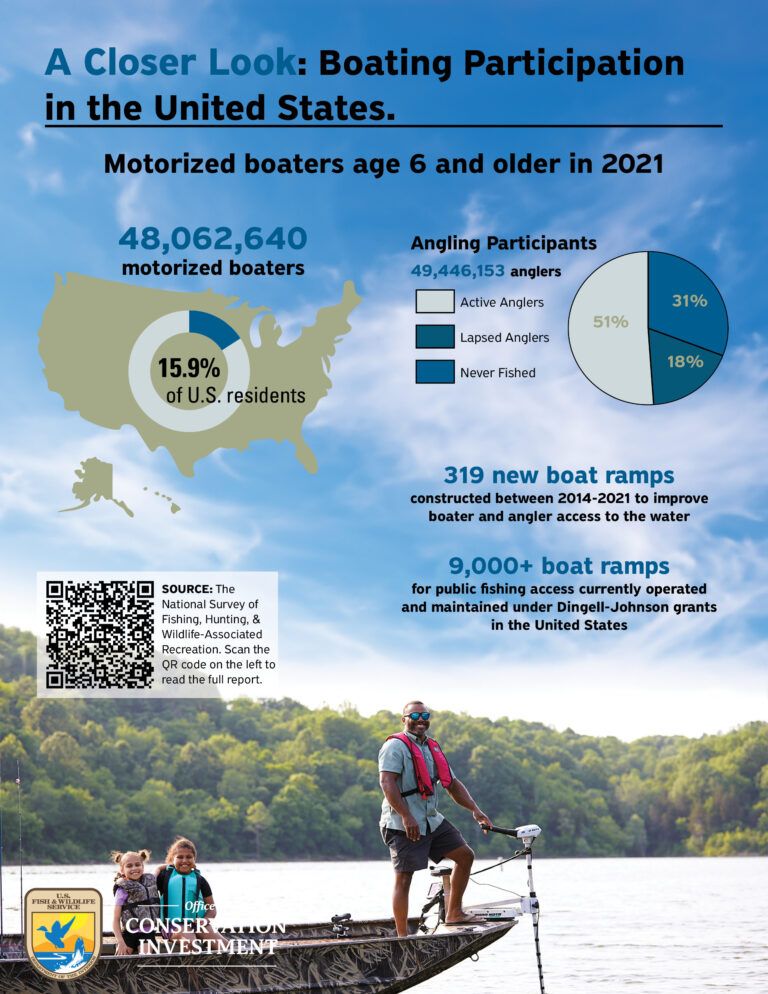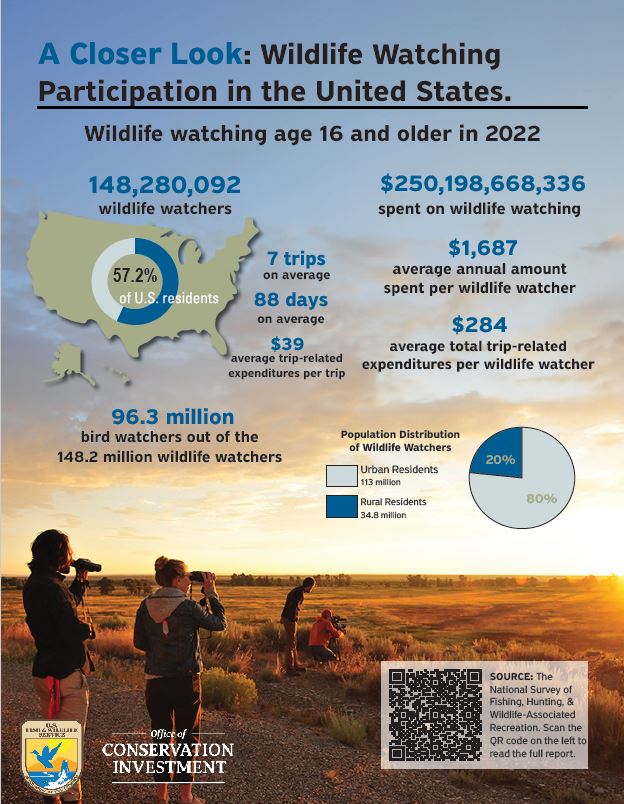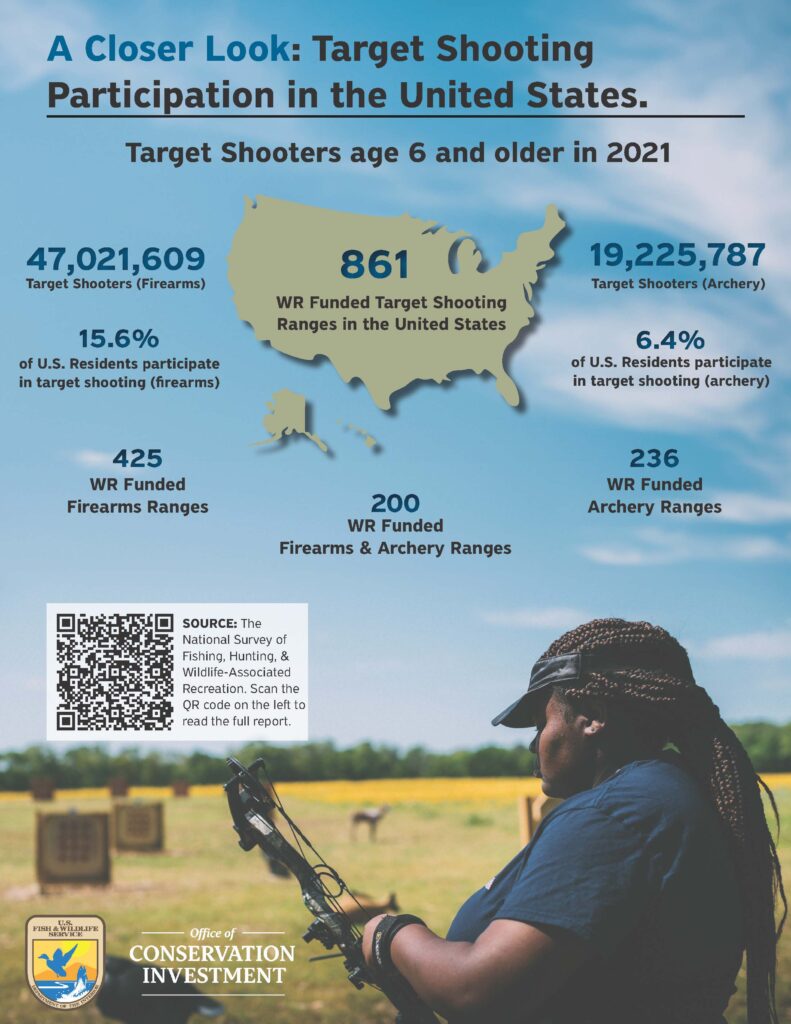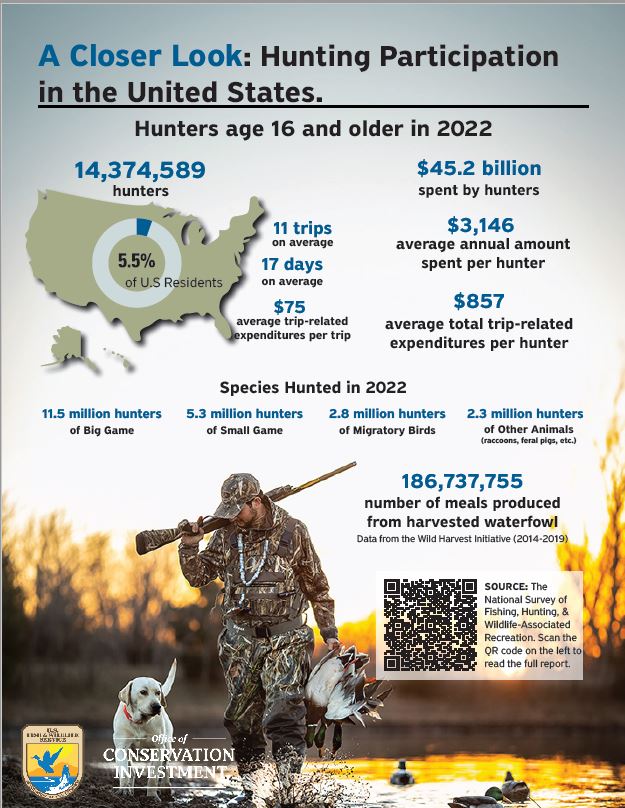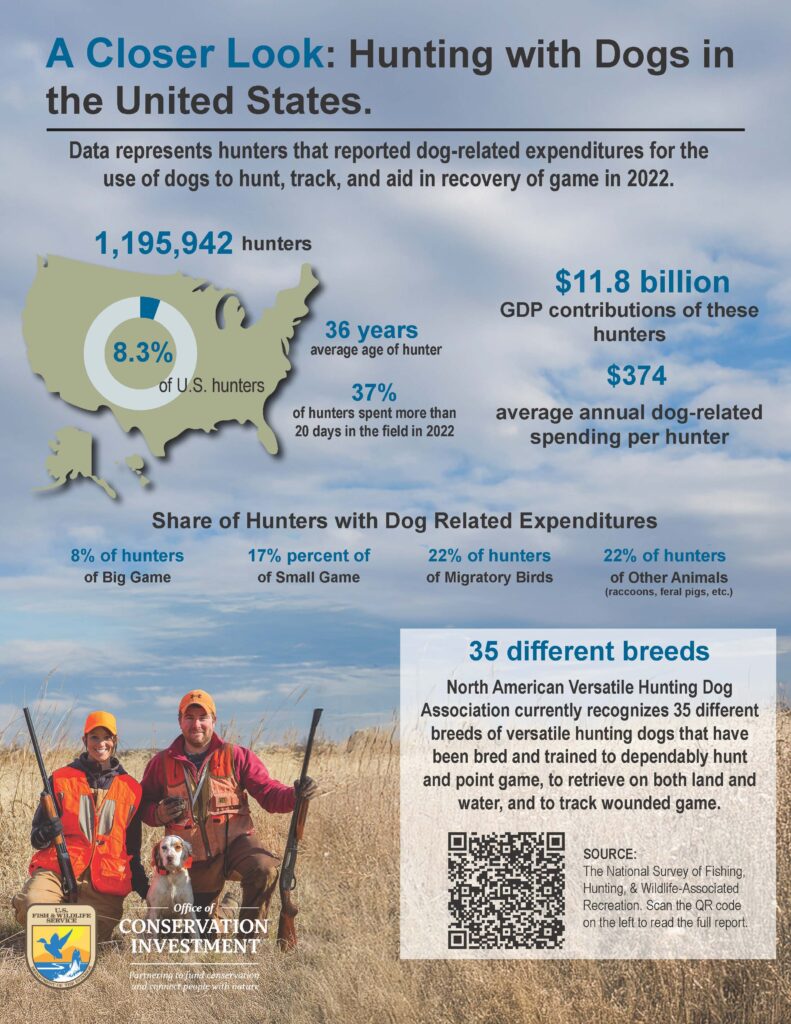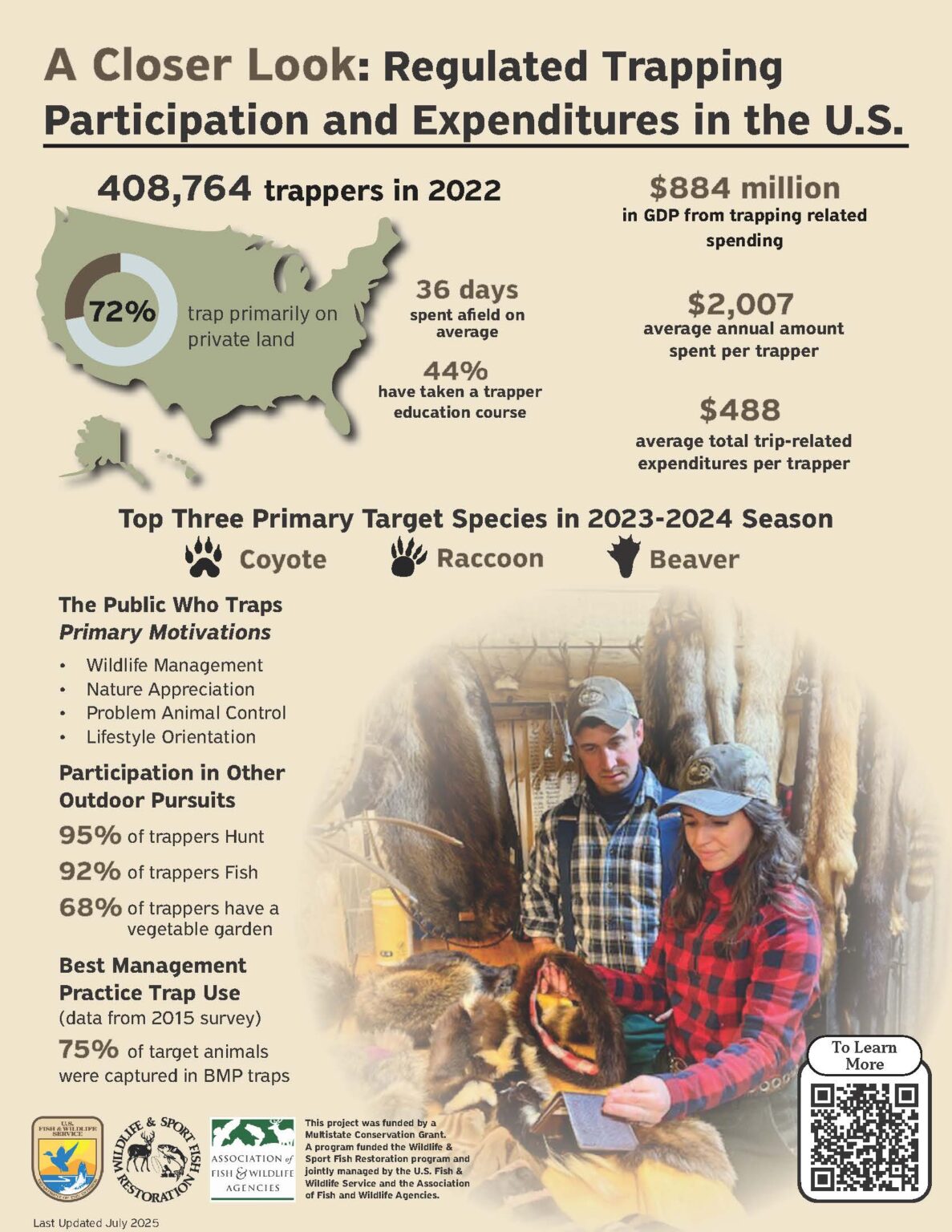2022 National Survey Report
The National Survey of Fishing, Hunting, and Wildlife-Associated Recreation (Survey) has been conducted since 1955 and is one of the oldest and most comprehensive continuing recreation surveys. The survey collects information on the number of anglers, hunters, and wildlife watchers, how often they participate, and how much they spend on their activities in the United States.
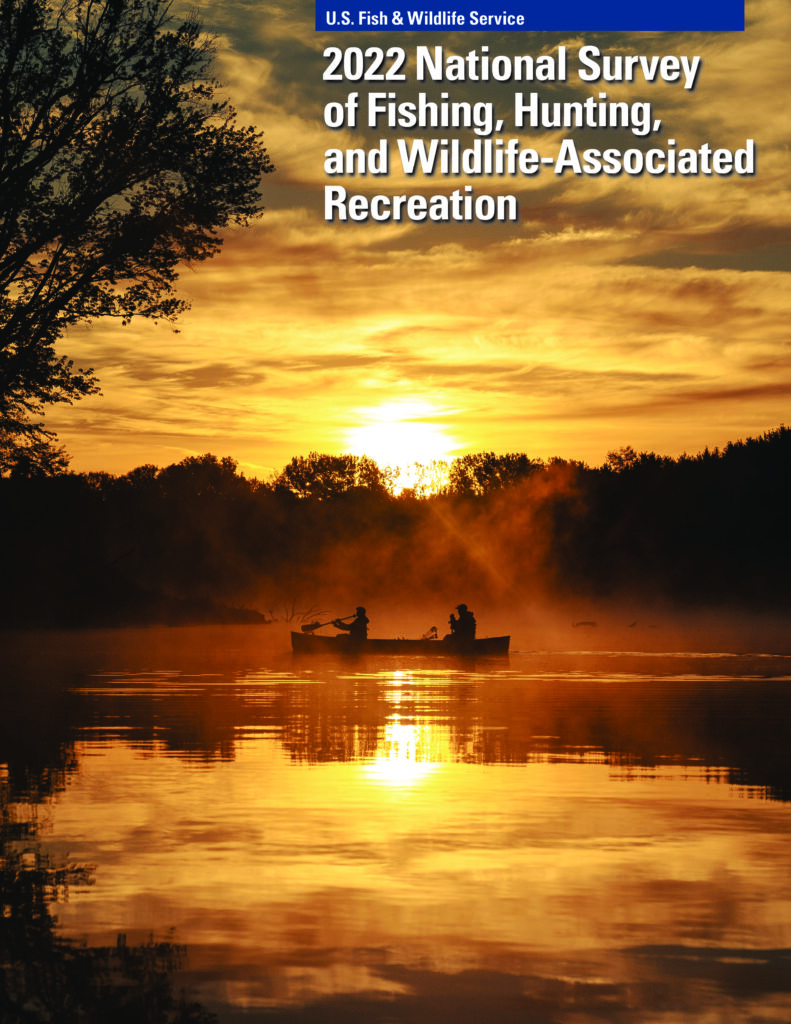

Survey Says: Your Voice Matters
Download this handout to learn how your participation in the National Survey of Fishing, Hunting, and Wildlife-Associated Recreation helps shape critical conservation efforts, funding, and outdoor initiatives across the country. Your voice matters—find out how your insights can make a difference!
2022 National Survey Infographics
Below are some illustrative infographics capturing key metrics from the 2022 National Survey of Fishing, Hunting, and Wildlife-Associated Recreation.
Right-click on the images below and select “Save As” to download these Birding by the Numbers infographics for your use.
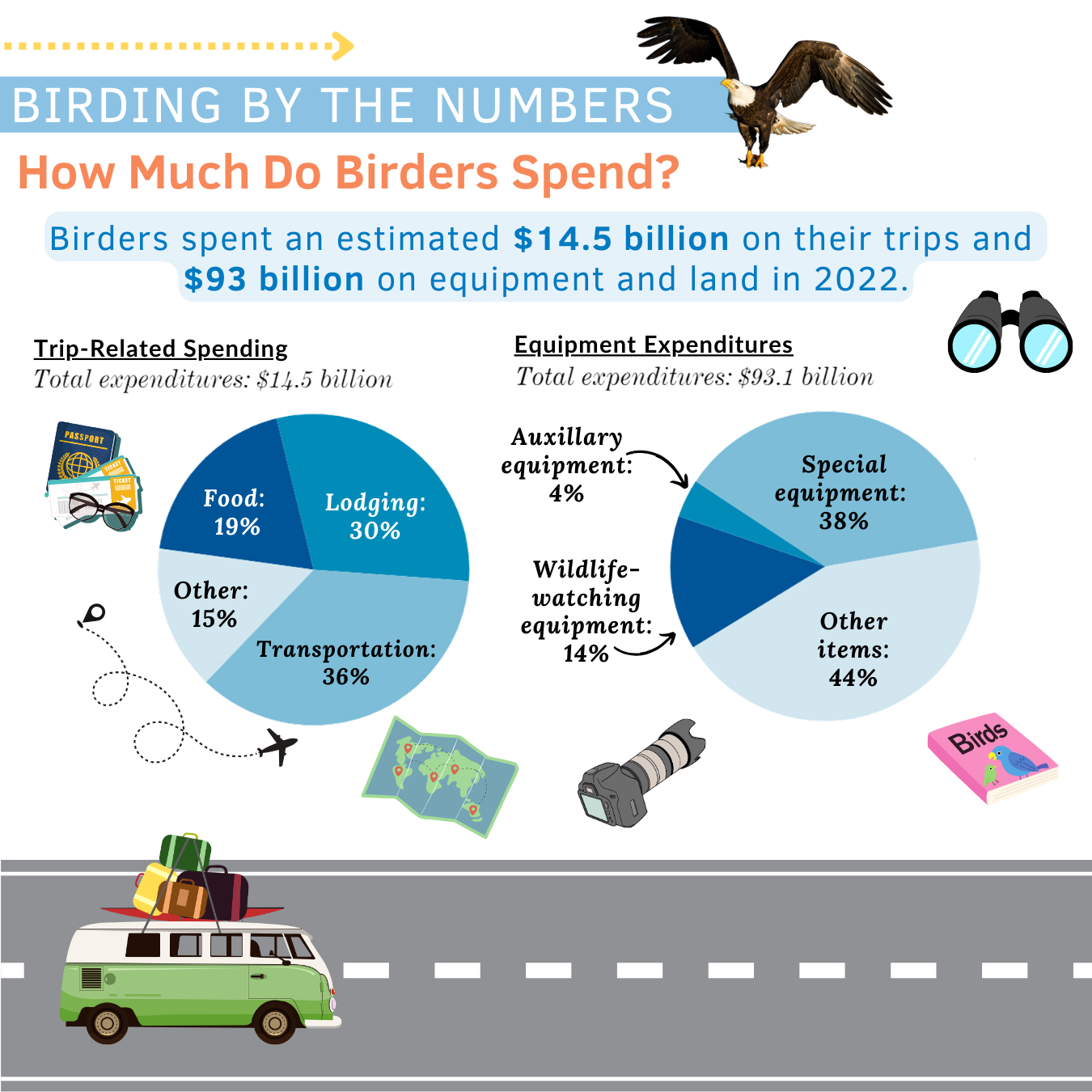

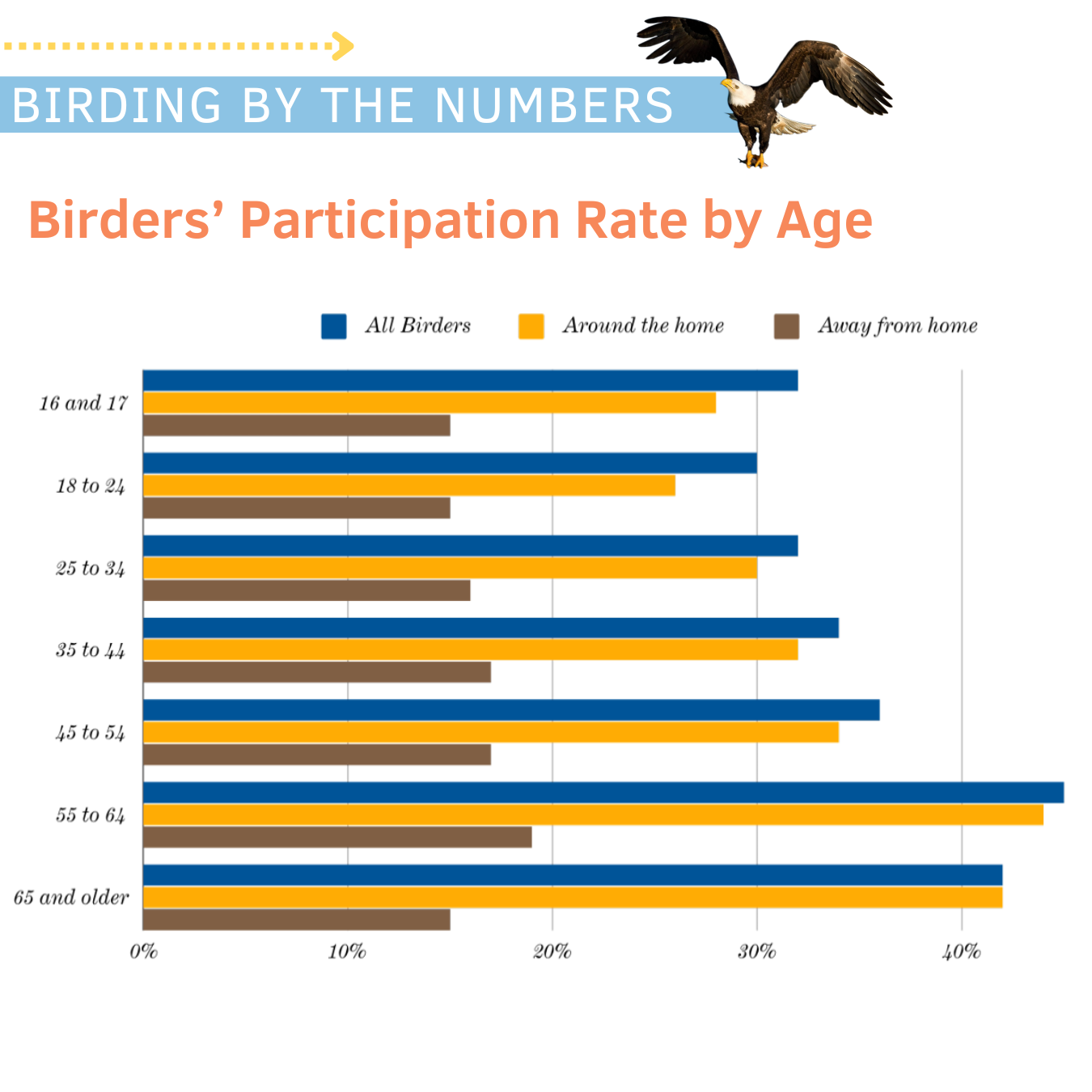
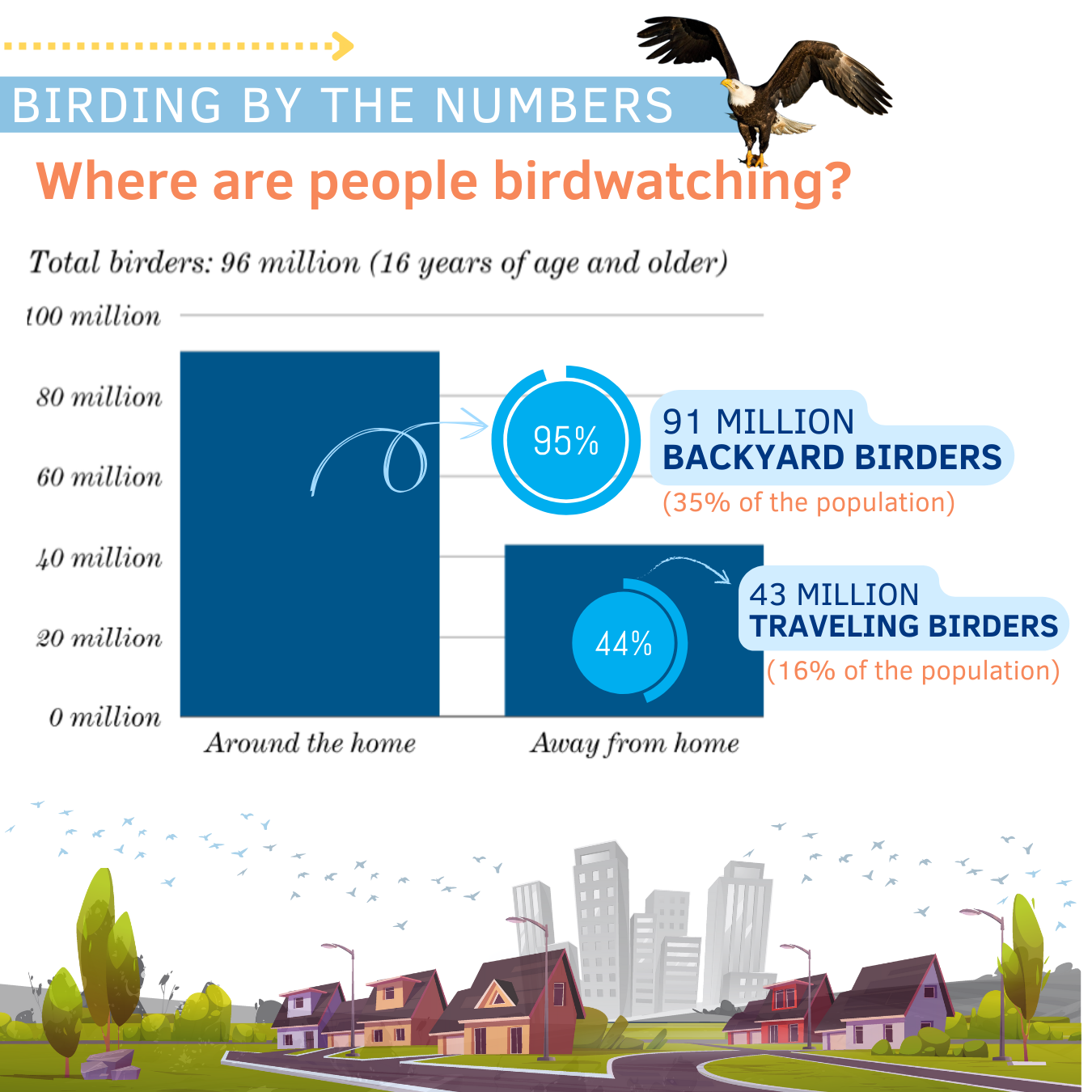


2022 National Survey Addendum Reports

Target Shooting in the United States: Participation, Demographics, and Relationship with Hunting and Fishing
This report provides demographic data and participation statistics on target shooting in the U.S., including a breakdown of both firearms and archery target shooting. With 47 million firearms and 19 million archery target shooters, target shooting is a popular activity among many Americans. In addition to demographic data, this report compares the target shooting population to the 2021 hunting population, offering insights into the differences between these groups.

Big-Game Hunters: Demographic Characteristics and Expenditures
Big-game hunting is unquestionably the most popular type of hunting in the United States. Big-game hunters pursue deer, elk, bear, wild turkey, moose, wild sheep, feral goat, or some other large animal. There were 11.5 million big-game hunters in 2022. For people 16 years of age and over, about 1 in every 23 Americans and 8 in 10 hunters hunted big game. This report provides the latest information regarding the demographic characteristics and expenditures of big-game hunters.
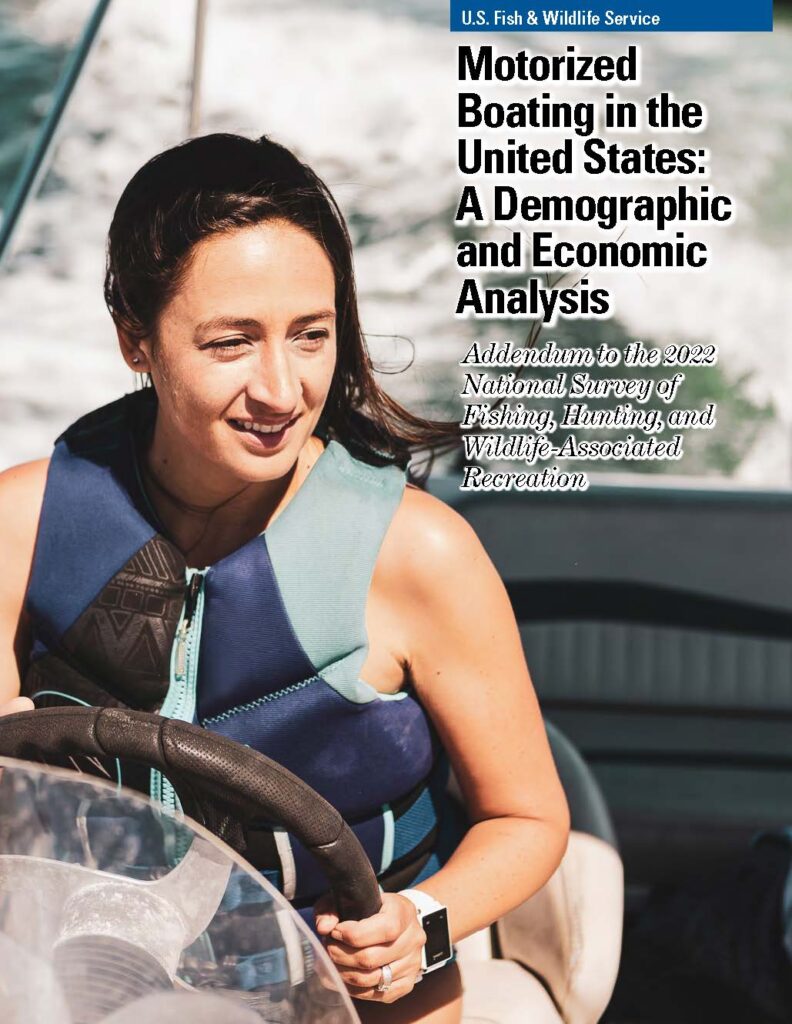
Motorized Boating in the United States: A Demographic and Economic Analysis
Prior to 2022, the National Survey of Fishing, Hunting, and Wildlife-Associated Recreation (Survey), which has been conducted roughly every five years since 1955, could not be used to analyze the full population of motorized boaters. A questionnaire change to the Survey enables a detailed analysis of the demographics and other outdoor pursuits of this population. In 2021, 47.3 million Americans 6 years old and older used a motorboat recreationally, representing 16 percent of the U.S. population in that age group.
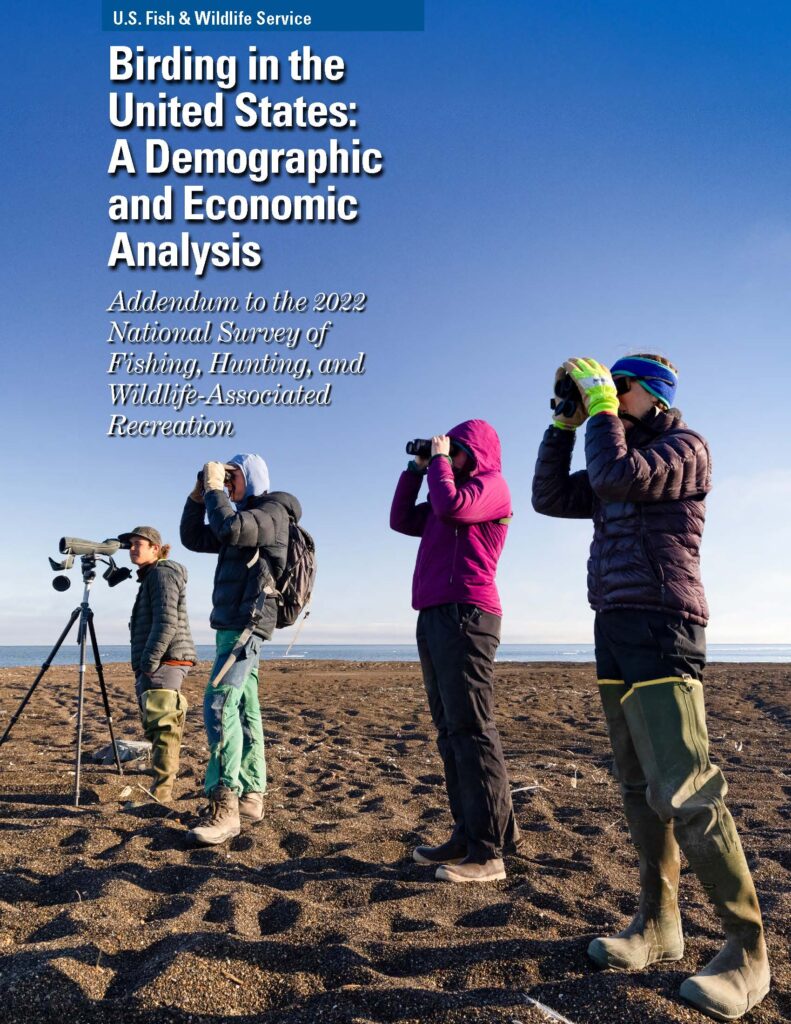
Birding in the United States: A Demographic and Economic Analysis
This report provides economic and demographic information on bird watching in the United States. The information is of use to a litany of public interest groups and policy makers. This report identifies the characteristics of those who watch, feed, or provide habitat for birds, such as where they live, and their level of interest or avidity toward birds and bird watching. In addition to demographic information, this report also provides economic measures of birding. It estimates how much bird watchers, hereafter called birders, spend on their activities and the economic contribution of these expenditures
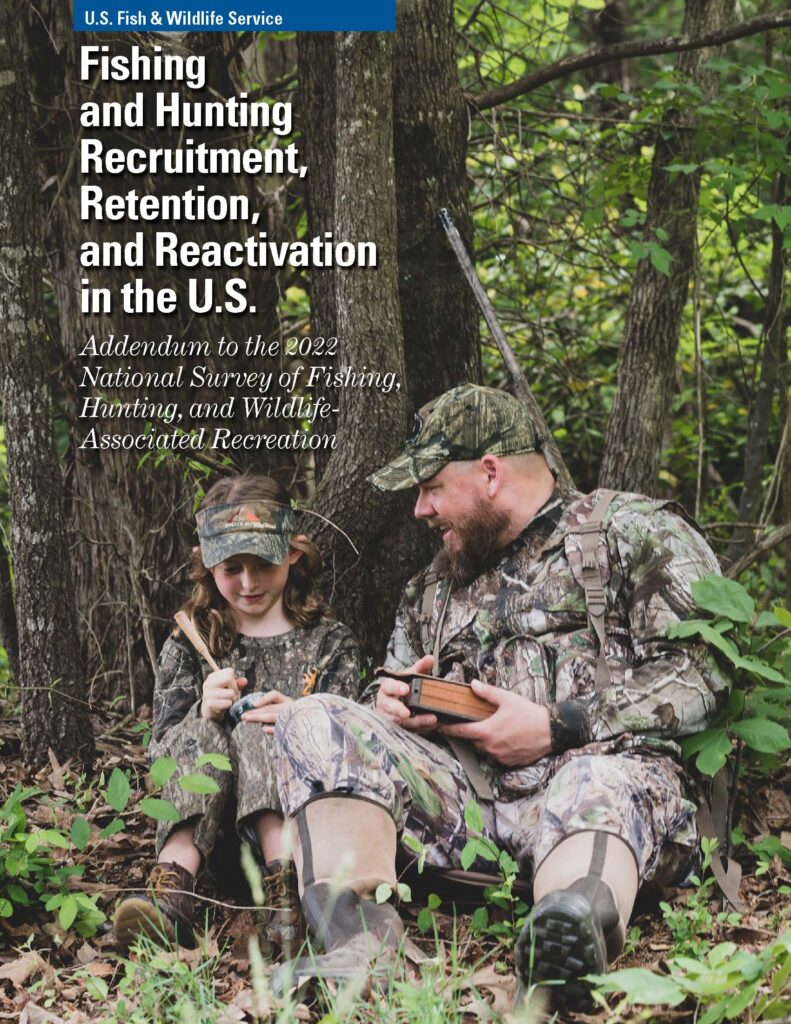
Fishing and Hunting, Recruitment, Retention, and Reactivation in the U.S.
The 2022 National Survey of Fishing, Hunting, and Wildlife-Associated Recreation (Survey) indicates that hunting and fishing remain highly important lifestyle choices in the United States. In 2022, there were 14.4 million hunters and 39.9 million anglers 16 years and older. While impressive, there are several indications that participation had declined from prior levels. A number of Recruitment, Retention, and Reactivation (R3) efforts have been implemented to increase hunting and fishing participation. By taking a deep dive into Survey data, this report seeks to assist those efforts by contributing to the existing body of participation-related research.
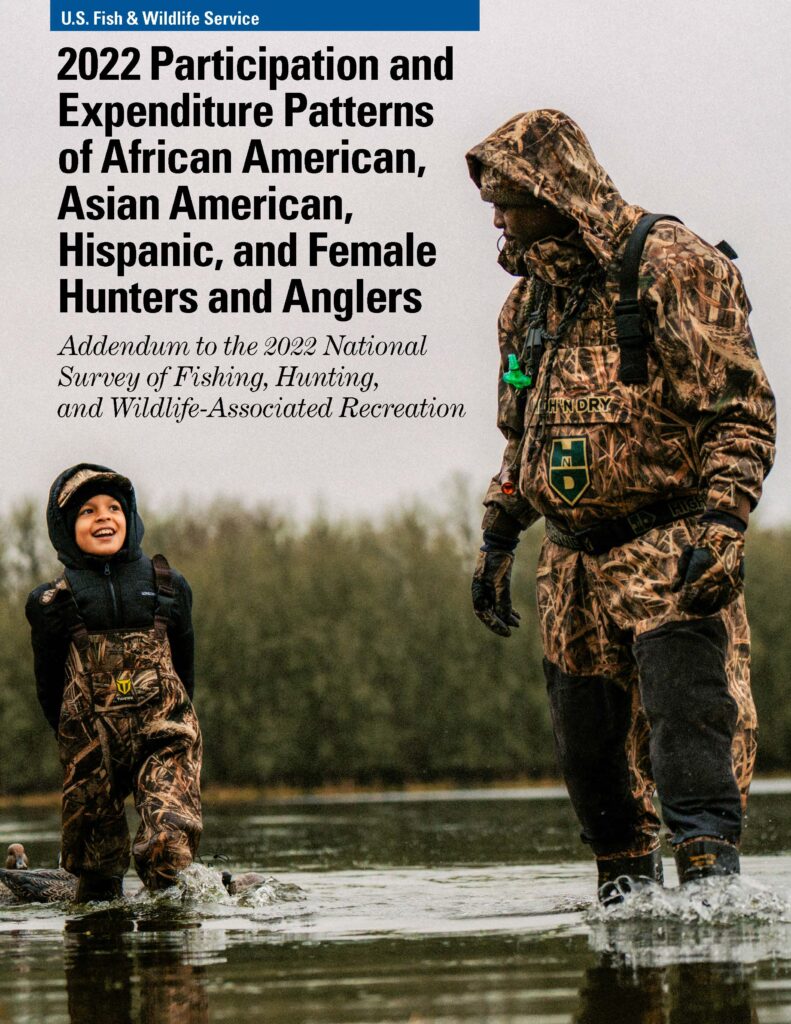
2022 Participation and Expenditure Patterns of African American, Asian American, Hispanic, and Female Hunters and Anglers
This report provides the latest information regarding under-represented populations of hunters and anglers—women, Hispanics, African Americans, and Asian Americans—and reveals how often they go afield and how much they spend for these activities.
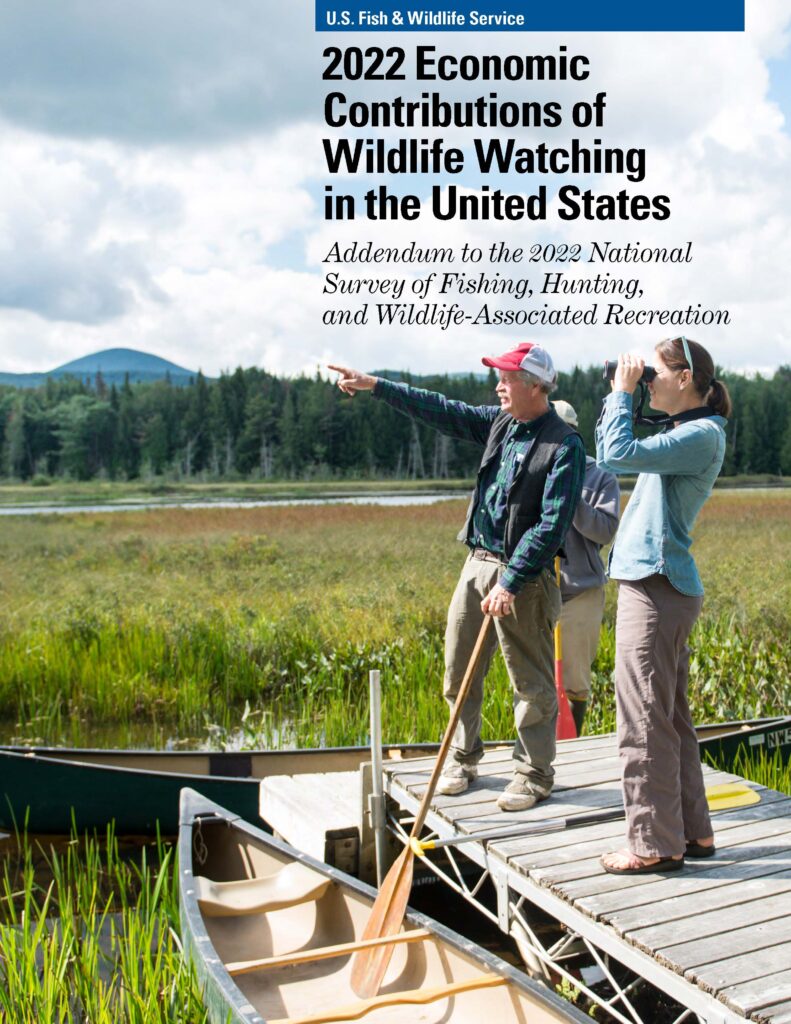
2022 Economic Contributions of Wildlife Watching in the United States
Wildlife is important in the lives of the American public. Wild animals have intrinsic, utilitarian, and cultural values to people that touch them at a personal level. About 45 percent of the age 16 and older U.S. population, enjoyed closely observing, feeding, and photographing wildlife (wildlife watching) in 2022.
Please click the button on the right to view select digital historic national surveys, state reports, and addendum resources are available to be viewed and downloaded on our FWS website.


